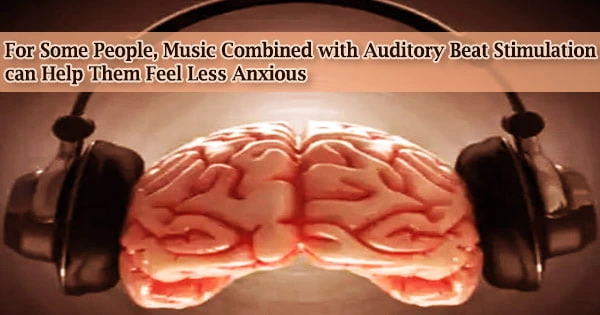According to a recent study published this week in the open-access journal PLOS ONE by Adiel Mallik and Frank Russo of Ryerson University in Canada, treatments combining music and auditory rhythm stimulation are beneficial in lowering state anxiety in some individuals.
Anxiety has been progressively rising in recent decades, particularly among adolescent and young adult populations. Previous research has shown that listening to music can help people feel less anxious, possibly even more successfully than some anti-anxiety drugs.
However, there is a scarcity of quantitative data on the impact of tailored music on anxiety. Anxiety disorder patients usually experience strong, excessive, and persistent concern and panic about routine events.
Anxiety disorders are frequently characterized by recurring episodes of acute anxiety, fear, or terror that peak within minutes (panic attacks). Anxiety has an unknown etiology. Various types of anxiety disorders have different risk factors.
In the latest study, 163 patients using anti-anxiety drugs were randomly assigned to engage in an at-home treatment session that included music, auditory beat stimulation, both, or pink noise background sounds similar to white noise.
With the pandemic and remote work, there has been a remarkable uptick in the use of digital health tools to support mental health. The results of this clinical trial indicate great promise for the use of digital health tools, such as LUCID’s digital music therapy, in the management of anxiety and other mental health conditions.
Adiel Mallik and Frank Russo
LUCID’s artificial intelligence, which curates music based on the patient’s emotional state and music tastes, was used to choose music for each patient. Auditory beat stimulation entails playing a series of tones in one or both ears in order to cause changes in brain activity.
Patients in all groups were instructed to download a treatment-specific application to their smartphone, close their eyes, and listen to a 24-minute session.
People who listened to both music and ABS (p=0.04, effect size=0.83), or only music (p=0.05, impact size=0.52), had higher reductions in somatic anxiety (physical symptoms of anxiety) than those who listened to pink noise before the treatment session.
Moderate trait anxiety individuals who listened to both music and ABS experienced the biggest reductions in cognitive state anxiety (the portion of anxiety associated to ideas and feelings).
The music-alone group showed considerably higher anxiety reductions than the ABS-alone group (p=0.04, effect size=0.72) among persons with high trait anxiety before the session.
The authors conclude that sound-based treatments can reduce state anxiety and may provide a simple and easy-to-distribute approach of treating anxiety in a subset of the population.
Drs. Russo and Malik add: “With the pandemic and remote work, there has been a remarkable uptick in the use of digital health tools to support mental health. The results of this clinical trial indicate great promise for the use of digital health tools, such as LUCID’s digital music therapy, in the management of anxiety and other mental health conditions.”
The outcomes of this study are interesting because they suggest that tailored music has a lot of promise in terms of efficiently lowering anxiety in specific sectors of the population.
“Hopefully, with additional research, we can help build a solid evidence base which further supports the use of personalized music as an additional tool in the clinician’s toolbox that can be used to help reduce anxiety in the patient population.”





